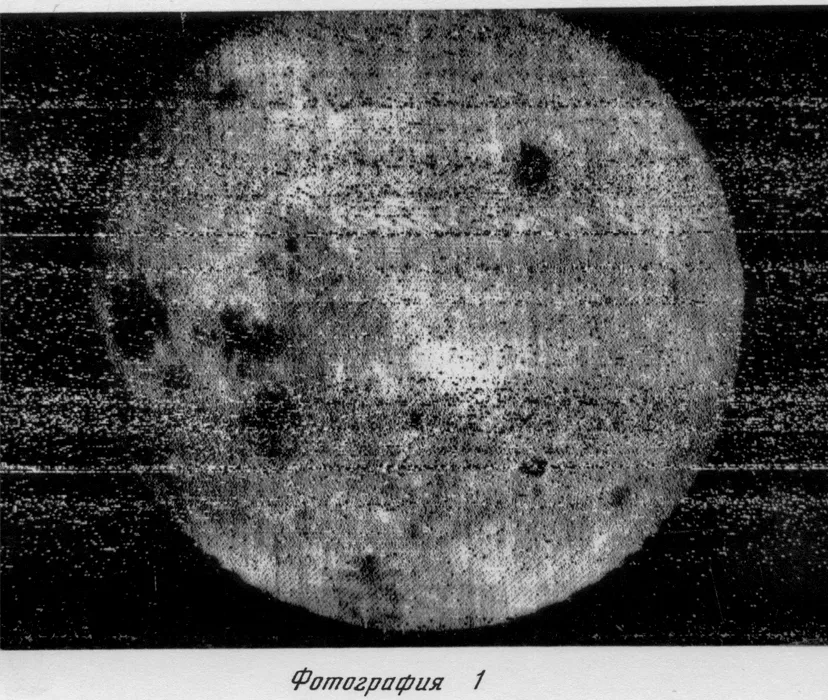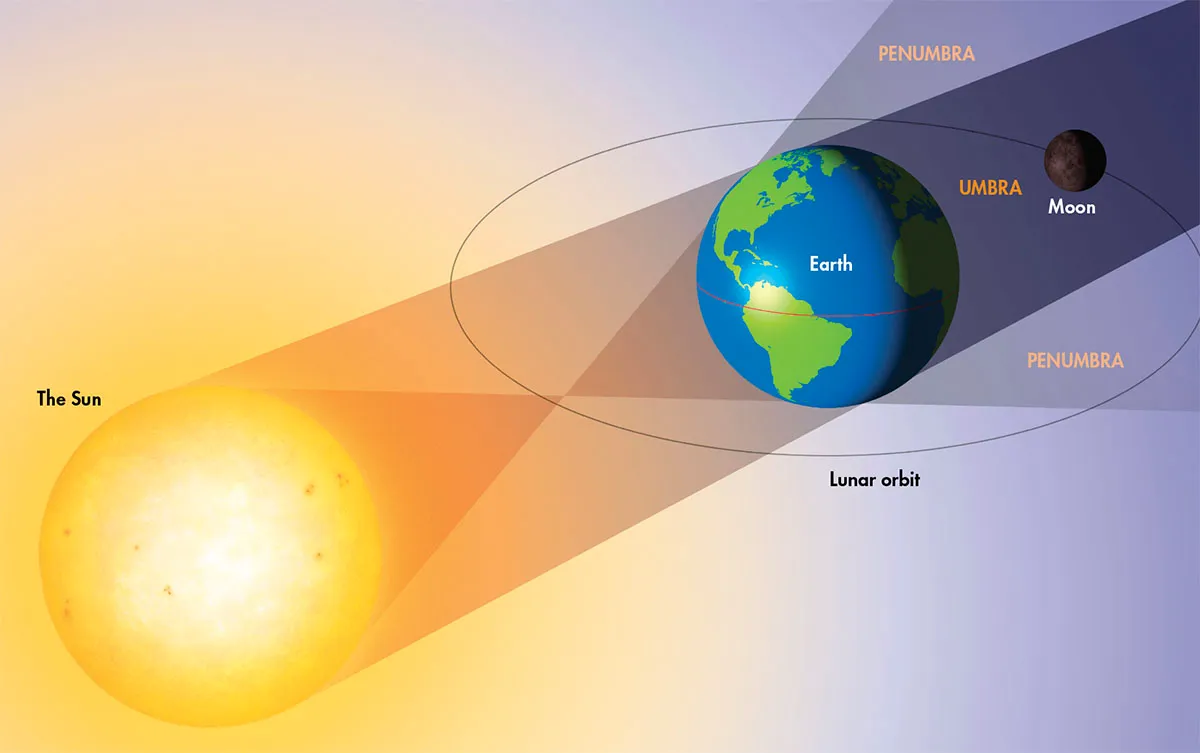The full Moon and the new Moon are polar opposites, each at either end of the monthly lunar cycle, yet each beautifully illustrating the clockwork, predictable nature of the Sun-Earth-Moon system.
While a full Moon is big, bright and clearly visible in the sky, a new Moon is dark, shadowy and unobservable.
The differences between full Moon and new Moon are a result of where the Moon, Earth and the Sun are positioned relative to each other at these key stages in the lunar cycle.
In this guide we'll explore what the terms full Moon and new Moon mean, and why they look so different.
Get the lunar phases delivered to your email inbox every week by signing up to receive our e-newsletter, or download our Moon phases calendar to your smartphone or tablet.

The Moon's orbit around Earth
To understand what's happening at full Moon vs new Moon, first there are some things we need to know about how the Moon orbits our planet.
Just as Earth orbits the Sun, the Moon orbits Earth. And the Moon also rotates on its axis as it orbits our planet.
What's more, the Moon is tidally locked to Earth, which means the speed of its spin matches the speed of its orbit around Earth.
In other words, the Moon takes about 27 days to orbit Earth, but also takes 27 days to complete one rotation on its axis.
So even though the Moon is spinning, the same side of the Moon always faces Earth.

Dawid Glawdzin, Southend on Sea, Essex
That's why astronomers talk about the 'near side' and the 'far side' of the Moon: the near side being the side that always faces Earth, and the far side being the side that always faces away from Earth.
No animal on Earth had been able to see the far side of the Moon throughout Earth and the Moon's 4.5 billion-year history.
That was the case until October 1959, when the Soviet Union's Luna 3 spacecraft sent back the first photos of the Moon's far side.

The far side of the Moon wasn't seen by human eyes until the Apollo 8 mission in December 1968.
We on Earth only ever see one side of the Moon, and it's always the same side.
But as the Moon orbits Earth, we see different portions of that Earth-facing side lit by the Sun, and this is known as the phases of the Moon.

Lunar phases
The Moon doesn’t glow on its own; it reflects sunlight.
As the Moon orbits Earth, the angle between the Sun, Moon and Earth changes.
This means different portions of the Earth-facing side of the Moon are illuminated at different times, creating the familiar cycle of lunar phases.

When less than half of the near side of the Moon is lit by the Sun, we see a 'crescent Moon', and when more than half is lit, it's a 'gibbous Moon'.
And when the illuminated portion of the Moon is increasing night after night, we say the Moon is 'waxing'.
When the illuminated portion of the Moon is decreasing night after night, we say the Moon is 'waning'.

During this monthly cycle, the Moon goes from new Moon, through the waxing crescent phases, to 'first quarter', which is when the Earth-facing side of the Moon is half-lit.
We call it 'first quarter' because the Moon is a quarter of the way through its monthly cycle.
After this point, the lit portion of the Moon continues increasing, through the waxing gibbous phases, until the whole of the Earth-facing side of the Moon is completely illuminated. This is a full Moon.

The illuminated portion of the Moon then begins decreasing night after night, through the waning gibbous phases, to third quarter Moon (when the Earth-facing side is half lit again).
Then the Moon proceeds through the waning crescent phases and back to new Moon.
At new Moon, the Earth-facing side of the Moon is completely in shadow, meaning we can't see it from Earth.
New Moon explained

The new Moon marks the start of the lunar cycle. During this phase, the Moon is between Earth and the Sun.
The side of the Moon facing Earth is therefore facing directly away from the Sun and is in total shadow, making it virtually invisible from Earth.
Why we can't see it
The Sun and Moon rise and set together, so the Moon is lost in the Sun’s glare during the day. At night, the side facing Earth is completely unlit.
Full Moon explained

About two weeks after new Moon, the Moon, Earth and the Sun align again, but this time with Earth in the middle.
As we look at the Moon, the Sun is effectively behind us, shining onto the near side of the Moon.
This means the side of the Moon facing us is entirely lit, so the Moon appears as a brilliant, glowing disc in the night sky.
Why it's so bright
The full Moon rises at sunset and sets at sunrise, staying visible all night. Sunlight fully illuminates the side facing Earth, making this the brightest lunar phase.
Significance of full Moons and new Moons

Given the Moon's dominance in our sky, and the incredible brightness afforded by a full Moon, it's unsurprising that the Moon has shaped human society and culture throughout history.
Before the advent of tall skyscrapers and the glare of light pollution from street lights, the Moon would have been much more noticeable and, therefore, culturally significant.
If you've ever been out in the wilderness at night when a bright Moon is high in the sky, you'll notice just how much it lights up your surroundings.
The bright full Moon must have been a welcome companion for travellers, before the days of street lights, electric flashlights and smartphones!

And the regular rhythm of the Moon’s phases has guided calendars, inspired myths and even influenced animal behaviour for millennia.
But the Moon is often cited to have a mystical, magical influence over our lives, our personalities, our fates and our emotions.
This is entering into the realm of astrology, for which there is no scientific evidence.
The Moon may indeed influence your mood, but only in the sense that you might be awestruck by an bright full Moon in the night sky.
In this sense, the Moon is affecting the same sort of natural wonder you might get from seeing a beautiful rainbow or a majestic waterfall.
The Moon's phase and location in the sky holds no metaphysical power over your life, any more than does a river or a cloud.
Full Moon, new Moon and the tides

Both the full Moon and new Moon have a powerful effect on Earth’s oceans and the tides, and this is due to the gravitational pull of the Moon as it orbits Earth.
When the Sun, Moon and Earth align (during both new and full Moon), the combined gravity creates especially high and low tides.
These are known as 'spring tides', but not because they have anything to do with the season of spring: instead it's because historically the tide was seen to be 'springing' forward at this point in the lunar cycle.
Spring tides occur twice each lunar month all year long, whatever the season.
Then, seven days after spring tide, if you could look down on our Solar System from above, you'd see the Sun and the Moon at right angles to one another.
At this point, during first quarter and third quarter Moon, the respective gravitational pulls of the Sun and Moon partly cancel each other out, producing moderate tides known as neap tides.
So does the Moon hold influence over life on Earth?
If you mean physically or culturally, the answer is, to a certain extent, 'yes'. If you mean astrologically, the answer is 'no'.
Solar and lunar eclipses

A quirk of full Moon and new Moon is that we sometimes get solar eclipses and lunar eclipses during these phases.
As we've seen, during full Moon the Earth is positioned in the middle. When we're looking at the Moon during full Moon, the Sun is behind us and the Moon is in front of us.
Sunlight hits the whole of the Earth-facing side of the Moon, and the entire portion is lit up.
Sometimes if the Sun, Earth and Moon are lined up exactly, light from the Sun passes through Earth's atmosphere and is scattered.
When this happens, sunlight becomes more red in colour, causing the Moon to turn a rusty red hue.
This is a total lunar eclipse.

During new Moon, the Moon is positioned in the middle, and we can't see the Moon because the sunlit side is the side facing away from us.
If Earth, the Moon and the Sun are lined up exactly at this point, the Moon appears to pass in front of the Sun from our perspective on Earth, and we get a total solar eclipse.
Total solar eclipses happen because the Moon and the Sun have the same apparent size in our sky, so the Moon covers the Sun neatly, temporarily blocking it out and creating the strange effect of 'nighttime' in the middle of the day.
If you have any images of the Moon, we'd love to see them! Send them to us by emailing contactus@skyatnightmagazine.com

